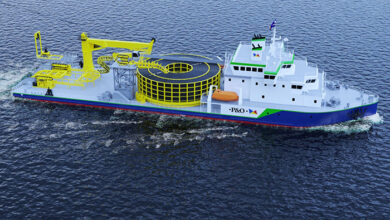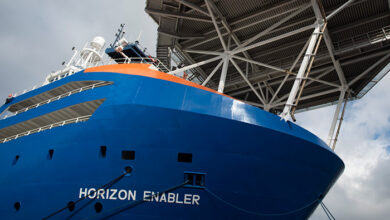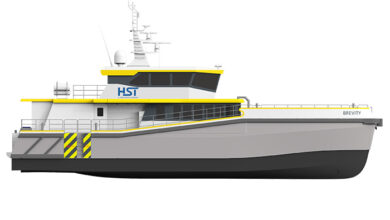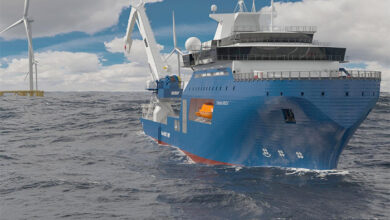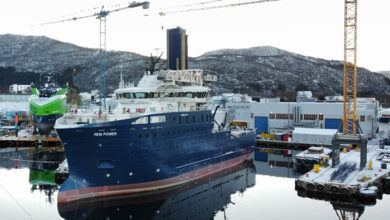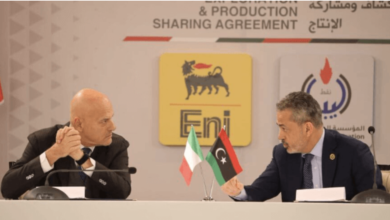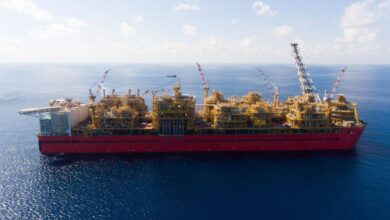DOE names 9 phase one winners in FLOWIN prize contest
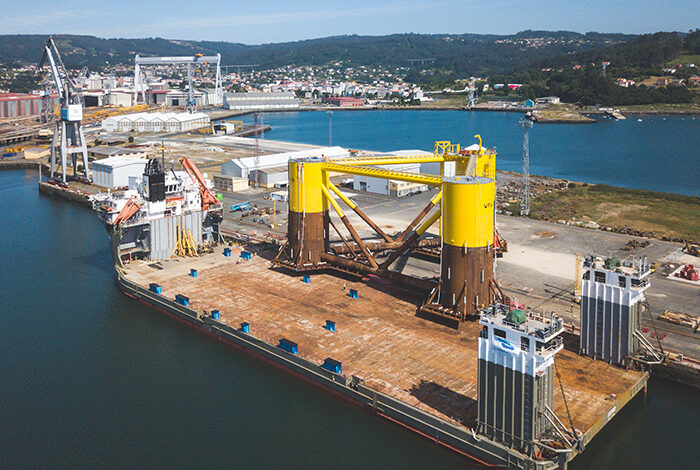
The U.S. Department of Energy today announced the Phase One winners of the FLoating Offshore Wind ReadINess (FLOWIN) Prize.
Open to floating wind platform designers, fabricators, and project site developers, the three-phase competition, aims to bridge manufacturing and logistics gaps to help meet the Biden administration’s goals of reduce the cost of floating offshore wind by 70% and deploy 15 gigawatts by 2035.
“The winning teams all demonstrated designs that are realistic and represent progress toward wide-scale, domestic floating offshore wind energy manufacturing and deployment in the United States,” said Alejandro Moreno, Acting Assistant Secretary for Energy Efficiency and Renewable Energy. “They help lay the foundation for a thriving domestic offshore wind energy industry, which can provide clean, renewable energy to millions of American households, support good paying jobs, and revitalize port communities.”
Each Phase One winner will receive $100,000 cash and $75,000 in vouchers for technical support provided by DOE national laboratories. In total, the FLOWIN Prize has a cash pool of $5.85 million, plus up to $1.175 million in technical support.
The nine winners of FLOWIN Prize Phase One, which focused on determining critical manufacturing and supply chain challenges to the commercialization of floating turbine technology, are:
- Aikido Technologies (San Francisco, California): The Aikido design is a steel semi-submersible floating platform made of steel tubes that can be manufactured at tower facilities. The platform design offers a streamlined installation process because it can be transported in a unique, horizontal configuration and requires no welding during the final assembly process.
- Beridi USA (Spanish Fork, Utah): Beridi’s Triwind is a concrete-based floating platform that uses damping pools and buoyancy chambers to provide superior stability, limiting fatigue loading. The platform can be mass-manufactured at existing sea ports to provide cost savings.
- FloatHOME (Emeryville, California): FloatHOME’s triangular platform, WindFloat now in its fourth generation, provides deep-water stability through unique design features, including a damping system to absorb wave excitation movement. This platform has been fully modularized to enable differing execution plan options, allowing for streamlined manufacturing and adaptable installation.
- OCG-Wind Full Cycle (Oakland, California): By prefabricating necessary parts, OCG-Wind Full Cycle can be quickly assembled near the site of an offshore wind farm. The light-weight four-column semi-submersible floating platform design uses simple, slender components engineered for any wind turbine, making it customizable and ready for large-scale deployment.
- PelaStar (Seattle, Washington): PelaStar’s floating platform is a light-weight tension leg-platform design that minimizes environmental impacts while maintaining cost savings as well as manufacturing and installation flexibility.
- Technip Energies (Houston, Texas): Technip Energies’ INO15 design is a semi-submersible, three-column floating platform. This design can be assembled at ports at low cost and is robust enough to withstand harsh operating environments.
- Tetra Triple-One (Boston, Massachusetts): The Tetra Triple-One floating platform uses a building-block arrangement, which involves fully producing the parts needed in an industrialized manufacturing environment and then transporting them to the assembly site. This makes port-side construction possible for a range of platform configurations, turbine sizes, and site conditions.
- VolturnUS+ Domestically Produced Concrete Hull (Orono, Maine): This team focused on a simplified geometry for their concrete floating platform design, VolturnUS+. With a smaller hull compared to traditional semisubmersibles, the design streamlines construction and deployment processes and reduces costs.
- WHEEL U.S. (Coral Gables, Florida): Incorporating tanks for buoyancy and balance, the ultra-stable WHEEL floating platform design can temporarily act as a barge platform, allowing it to be assembled with the wind turbine near shore and towed to sea. It is compact in size to reduce both costs and carbon footprint.
ON TO PHASE TWO
Winners from FLOWIN Prize Phase One are eligible to move into the second phase of the competition, in which each team will develop a pathway for mass manufacturing and deployment of its floating offshore wind energy substructure design. Phase Two will have up to five winners, each receiving $450,000 in cash and a technical services voucher valued at $100,000. The competing teams will be judged on their progress in developing a plan for mass manufacturing and deployment of gigawatt-scale, floating offshore wind energy farms.
The first-ever prize funded by DOE’s Wind Energy Technologies Office, the FLOWIN Prize launched in September 2022 in support of the interagency Floating Offshore Wind Shot. The prize is administered by the National Renewable Energy Laboratory in partnership with the Business Network for Offshore Wind.
PRINCIPLE POWER TEAMS WITH AKER
The FloatHOME Project selected in FLOWIN Prize phase one involves both Principle Power, developer of the Windfloat platform, and Aker Solutions. Commenting on the project’s selection for the first round, Aaron Smith, chief commercial officer for Principle Power said: “Principle Power and Aker Solutions have unparalleled experience with series construction of floating wind turbines in designer, EPCI, execution oversite, and O&M roles. Principle Power brings the lessons learned from the WindFloat 1 (2 MW), WindFloat Atlantic (25 MW), Kincardine Offshore Wind Farm (50 MW) and now Les Éoliennes Flottantes du Golfe de Lion (30 MW) to this project. Winning this prestigious award is an important recognition of our leadership in floating offshore wind and deep knowledge of our home market in the United States, which is starting to pick up speed following the recent auctions in California and additional deep water auctions already confirmed in Oregon and Maine.”
“The U.S. is a strategically important market for Aker Solutions, where we see a huge untapped potential for floating offshore wind,” said Stephen Bull, EVP of renewables at Aker Solutions. “Aker Solutions and Principle Power bring a unique breadth of capabilities to the sector. At Aker Solutions, we have decades of technical and project experience from deep-water energy projects across the world. Within floating offshore wind, Aker Solutions provides early phase concept studies and consulting, optioneering, supply chain assessments, engineering and fabrication wrapped up in a world- class execution model.”
The primary goal of FloatHOME is to develop a vision and implementation plan for fabrication of the proven WindFloat technology in the U.S. in purpose-built, low carbon, advanced manufacturing facilities. The consortium will qualify existing infrastructure and work with the supply chain to develop optimized floating offshore wind project execution plans.


